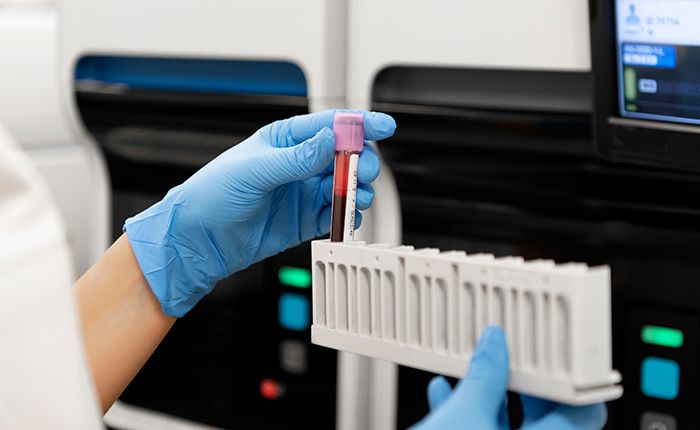This article was originally published and written in Laboratory Economics Volume 19, No. 5 May 2024 issue.
Introduction
Most health systems and their labs remain under financial pressure due to rising employee costs and inflation. As a result, they are looking to cut costs anywhere they can, including reference (aka send-out) testing expenses. hc1+Accumen negotiates about 15-20 reference lab agreements per year for health systems and hospitals.
Below we summarize strategies for negotiating your lab’s next reference testing contract from Accumen’s Brent Bolton, VP/GM, Strategic Partnerships.
What is the average percentage of hospital lab budget spent on reference testing?
Lab department costs average about 4% of the total hospital operating cost budget. And about 30% of the lab budget is spent on lab supplies. Reference testing is around 20% of overall lab supplies cost. So, reference testing represents an average of roughly 6% of the hospital lab budget and less than 1% of the average hospital’s total expenses.
Who else besides ARUP, Labcorp, Mayo and Quest should an RFP go to?
Depending on where the hospital lab is located, it may also want to consider regional labs. A few examples include Wisconsin Diagnostic Labs (WDL), TriCore, Sonic Healthcare, BioReference and Cleveland Clinic.
In addition, it’s good to get pricing from some of the secondary/specialty labs that focus on esoteric testing, toxicology testing and other labs that do third-party testing. Some specialty tests will be lower-cost and have a quicker turnaround time when ordered directly from a secondary lab like NeoGenomics. As a result, it often makes sense to carve out certain specialty tests from the primary reference lab agreement.
What length of term should a new reference testing contract be?
Three years is generally the average reference lab contract duration. Five years is okay if you can get significant discounts. There should never be volume commitments with the reference lab agreement; it should be a fee schedule only with fixed pricing. Auto renewals are also acceptable as long as there is pricing protection.
How many tests should be included in an RFP?
All your send-out tests should be included. This might result in an RFP with 1,000+ tests.
Will FDA regulation of LDTs cause hospitals to send out more tests to reference labs?
Under the FDA’s initial proposed regulations, we thought the outcome was going to be catastrophic for some hospital labs. They would have had to send out all of their LDT testing to one of the national reference labs. With the final FDA ruling, there appears to be a lot more flexibility. It looks like hospitals will be exempt from having to file premarket applications with the FDA for their existing LDTs.
What about new esoteric tests that are introduced after a reference testing contract is signed?
Labs must consistently monitor and manage send-out testing to ensure new expensive testing does not fall through the cracks. For any tests with significant volume or high pricing, request multiple bids to compare with the primary reference lab pricing even after the primary reference lab agreement is signed. Many of the reference labs will allow for annual pricing reviews on the testing that was not included in the original RFP, especially if this new testing is increasing volumes and revenues to the reference lab. If the agreement is done well, this new testing can help to get rebates or volume discounts which will minimize the overall cost increase exposure.
What are some tips to help make sure that hospitals don’t overpay for reference testing?
Conducting an RFP with multiple reference labs that are legitimate options will help ensure hospitals are not overpaying for reference testing.
One cost that can sneak up on a hospital lab is miscellaneous testing. The physician may choose to send testing to the primary reference lab but specify that it is performed at a specialty lab (commonly known as a pass through). The primary reference will then mark up that testing and also charge handling fees. It will be reported on the hospital lab’s bill as a miscellaneous test. Hospital labs need to monitor these miscellaneous testing codes, descriptions and fees and see if that testing can be performed at the primary reference lab instead.
Could pricing for reference tests simply be set at a percentage of the Medicare CLFS rates?
Yes, it is possible, but the reference labs will never willingly change to this transparent pricing model on all testing without federal regulatory enforcement. Reference labs commonly set pricing based on several factors including total revenue projections and test volumes; and not necessarily on a test-by-test basis. As a result, the biggest determinant to pricing is the amount of reference lab competition available to each hospital lab client.
What are your thoughts on using benchmarking pricing in the RFP process?
Most benchmark pricing is just averages on top of other averages, and the data is often outdated. It generally does not account for market changes, rebates, or the hidden value adds that a vendor can provide. A health system may feel they are getting a good deal — even when they are not. The only truly accurate benchmark pricing comes from utilizing a third party (e.g., Accumen) that sees real time national market data from every reference lab, every GPO, and every size hospital.
Can you provide average pricing data on some commonly referred tests?
Average pricing per test is extremely subjective, as it is based on the performing testing lab and location, but most notably the pricing is based on the per test volumes sent to the reference lab. It is more important to look at the total cost of aggregated reference lab testing costs versus focusing on individual test codes, unless, of course, there are significant pricing outliers. Pricing for testing can range significantly given the variables I’ve mentioned. For example, a chlamydia trachomatis/ neisseria gonorrhoeae (CT/NG) amplified probe can range anywhere from $15-$40.
What kind of savings can hospitals expect when sending out an RFP for reference testing?
Savings are dependent on each situation and each hospital lab’s level of leverage. As I mentioned earlier, true competition is the best driver for aggressive savings (and that’s more than just sending out RFP’s). That said, we generally see savings of 10%+ for contract renewals with an incumbent reference lab and up to 25% if a reference lab vendor change is made (which can be a heavy lift for the hospital as it involves a lot of scarce IT resources).
What makes the IT transition to a new reference lab so difficult?
It’s difficult because health system IT resources are generally constrained, thereby creating a bottleneck. Every individual send-out test has to be built into the LIS, and there could be thousands of tests that the health system or hospital sends to the new primary reference lab. Each one of those tests will have a test code, description, reference range for each result, specimen collection information, etc. that needs to be added to ensure test orders and results are entered accurately.
Can’t hospitals simply take advantage of reference testing contracts through their GPO?
Yes. Hospitals can always utilize the GPO pricing tiers that they qualify for, and that will prevent them from overpaying on reference lab testing. But to maximize savings, value adds, and create favorable contract terms, the best way is to create an agreement between the hospital and the reference lab with a fee schedule that is custom tailored for the hospital. As mentioned earlier, the best way to do that is to have a competitive bidding process that looks at each hospital’s unique test mix, volumes, service level requirements, and consolidation/standardization opportunities. The GPO contract will not take all those particulars into account. It’s also worth noting that a reference lab fee schedule is one of the most important agreements that a hospital can negotiate, so it’s always worth the effort to do so.
Learn more about how hc1+Accumen can work alongside your organization to make sure you receive the best reference test pricing.
______________________________________
Brent Bolton, MBA, CPSM is VP, Strategic Partnerships for hc1 + Accumen. Brent is a Supply Chain and Materials Management expert with over 20 years’ experience in the manufacturing and healthcare industry. He is results driven, and has a proven track record of cost reduction, continuous process improvement, and strategic partnerships. Brent has an MBA from Point Loma Nazarene University and a BS in Business Management with an emphasis in Supply Chain Management from Arizona State University. Brent is an Adjunct Professor for the College of Business at San Diego State University, teaching graduate courses in management of operations and supply chain systems. He is a Certified Professional in Supply Chain (CPSM), and a Lean Six Sigma Green Belt.




